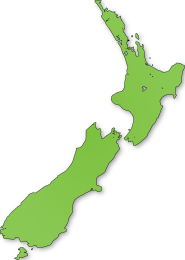Jan 2011 Newsletter
 Dear Notable Tree Enthusiasts,
Dear Notable Tree Enthusiasts,
The New Year is well underway with many of us here in New Zealand still in holiday mode. 2010 ended on a high following another successful joint NZAA/NZNTT conference in Auckland where attendees enjoyed the mix of social gatherings held over a comprehensive 3-day programme. Kauri Dieback was the subject of the free public Tane Mahuta Lecture where Dr. Nick Waipara presented the audience with a grim account of the potential loss of our iconic tree to Phytophthora taxon Agathis (PTA). This was, in effect, a timely reminder of the importance of recording our current tree heritage so that, in the event of decline or loss, future generations can at least marvel at what we were able to experience.
There have been a number of interesting trees added to the database in the past few months. In addition to this we are pleased to release more improvements to the database. More below but first,
A note about measuring the girth of trees on slopes
In the last newsletter we talked in general terms about measuring tree girth. Trees growing on sloping ground create problems in relation to where to place the baseline of your tape to determine breast height (1.4m). Do you measure from the bottom of the slope at ground level, or on the top side? For consistency and accuracy we prefer breast height to be taken from the mid-slope position. To do this, sight down the centerline of the stem to where it comes in contact with the ground. Place the baseline of your tape here and then take your 1.4m measurement.On very steep slopes you may need to measure the tree above 1.4m to clear the ground on the topside. As examples, tree 778 was measured at 2m and tree 779 was measured at 1.6m. In the notes a reference has been made to the height of girth relative to the topside of the tree. This provides good reference information to other tree measurers who may re-measure the tree in the future.
register.notabletrees.org.nz/tree/view/778
register.notabletrees.org.nz/tree/view/779
An update – The Pahi Moreton Bay fig in Northland
This tree was considered by Bob Burstall in 1971 to be the finest looking specimen in the country. Updated measurements and images have been recently entered into the database – and, from the new information, you can see that Burstall’s comment is still true today. Check out register.notabletrees.org.nz/tree/view/501A new listing of the Moreton Bay specimen at Monte Cecilia Park, in Hillsborough, Auckland, shows that this tree is still the largest tree of this species recorded in New Zealand register.notabletrees.org.nz/tree/view/783. To view the full potential of these trees go to the Australian Big Tree Register www.nationalregisterofbigtrees.com.au/listing_view.php
New listings
Two standout trees have been listed along with many other new trees. In brief – firstly, the Caucasian fir (Abies nordmanniana) at Mararewa, near Tapawera in Tasman is an exceptional specimen – particularly since it has come to light that it is the largest recorded specimen outside its natural range register.notabletrees.org.nz/tree/view/696 . The second tree is the Coulter pine (Pinus coulteri) located at Otekaieke, North Otago. The institution where this tree is located has a very interesting history. Despite the tree record being dated 1984 (S.W. Burstall) it is still the largest known Coulter pine in the world. Images on the Internet of the Campbell Park Estate appear to show that the tree still exists and one wonders at how much it has grown over the past 30 years. register.notabletrees.org.nz/tree/view/776
New features
We have had lots of feedback regarding the new database features reported in the last newsletter. The map feature and tree dimension format on the search results table have been well received. The ‘recent changes’ report, located on the database home page, has also been very popular. Thank you all for your feedback.
Text Search
The tree notes are now fully searchable. This development was made possible by the Ministry for Culture and Heritage and the Trust thanks them for their assistance and support. The feature will be of particular interest to historians and writers. To use this feature select ‘Text Based Search’ located at the top of the search page. Enter your key word/s and click ‘Enter’. For example, to see how the feature works, try searching ‘Prince or ‘World War’.
Quick Search By Region
You will note the new map on the home page of the database and the ‘drop down’ for each region in New Zealand. This enables users to quickly search trees listed within given area.
Regional Sponsors
Users will notice sponsor banners showing up on the tree file pages. The Trust is pleased to offer individuals and organisations the opportunity to support the project and in return gain some recognition. Anyone wishing to sponsor all the trees of a particular region in New Zealand should contact the Trust via the website.
Mark Your Calendar!
The NZNTT will be hosting an informal information event at Cornwall Park in Auckland on Friday 18 February. A brief presentation on using the database and listing new trees will be given. This will be followed by measuring trees in the field. Bring a lunch and come join us in the park. Meet at the Education Room at the Cornwall Park visitor’s information centre at 9.00am.Thank you to those that have sent in updates and new tree records. For those of you who would like to get in on the action to update tree records or register new trees, simply go to the website and follow the instructions.
Kind regards,
The Notable Trees team
www.notabletrees.org.nz

